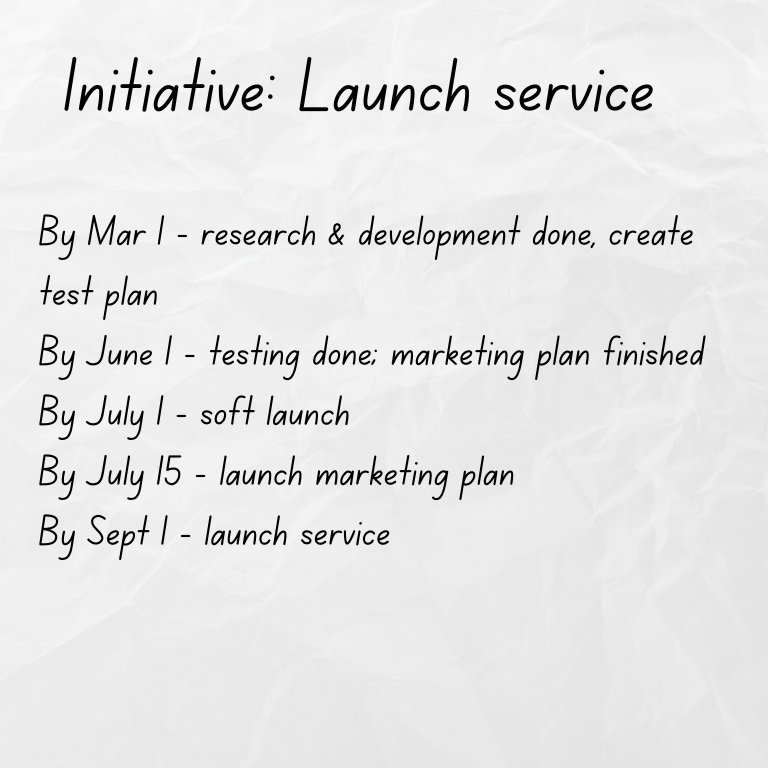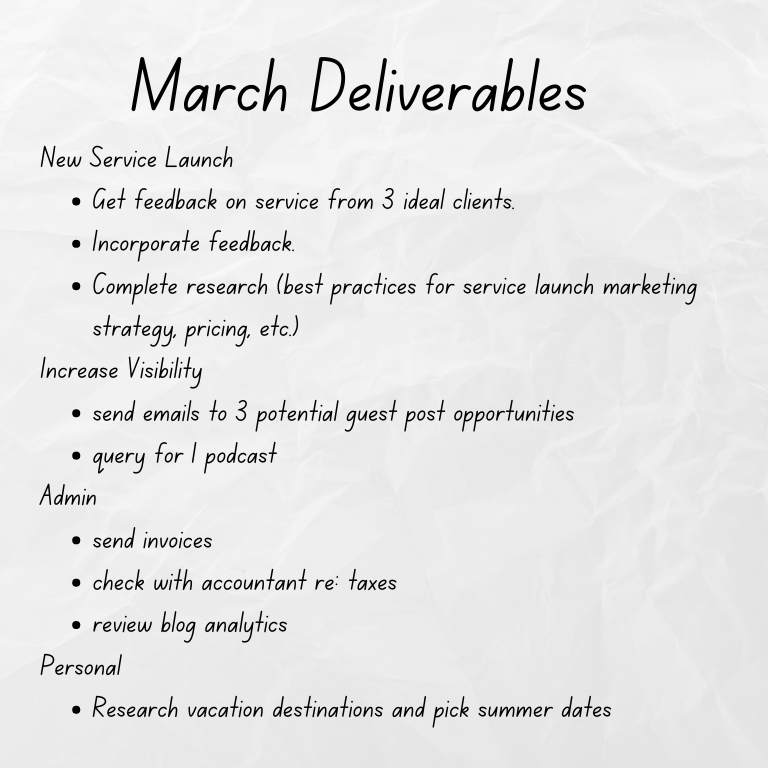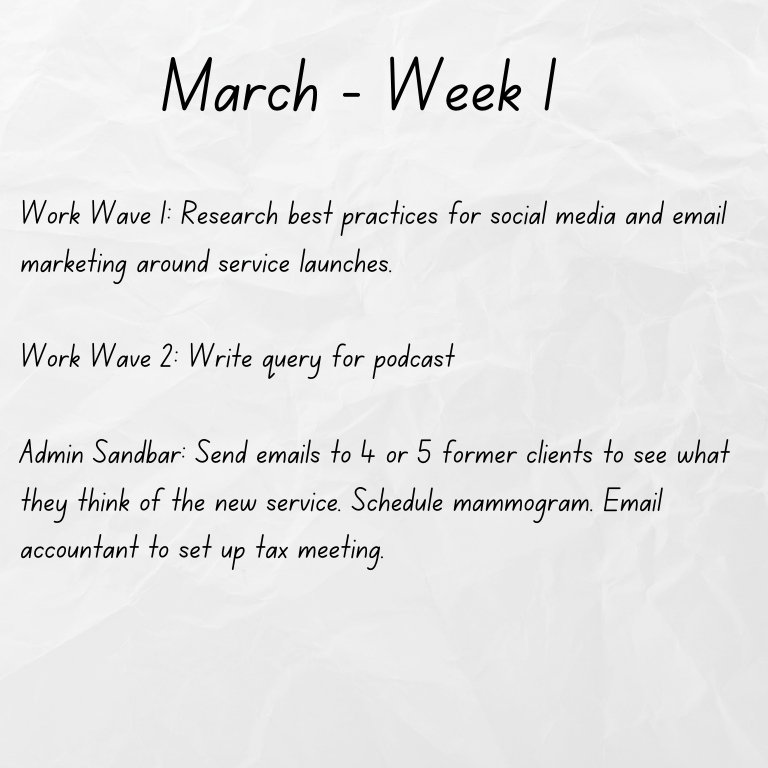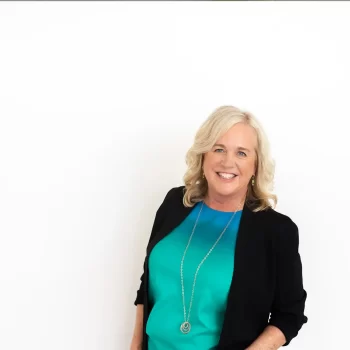Research shows that entrepreneurs who achieve their business goals share the ability to implement a well-defined action plan. They are able to create a strong connection between their long term vision and their every day actions. I created the 5-step Viewpoint Business Planning Framework to help first time entrepreneurs work through this same process.
The Viewpoint Business Planning Framework for Achieving Business Goals
I created the 5-Step Viewpoint Planning Framework to help entrepreneurs connect long term vision with everyday actions. The central idea is to take break down your strategy using more and more detailed viewpoints ranging from Airplane View (least detailed) to Focus View.
Using this framework will help you take your big ideas, break them down into manageable pieces, set a timeline, keep yourself on track and stay focused so you get things done.
- Airplane View: This is your strategy. Clearly define 2-3 strategic initiatives you will use over then next 9-12 months to reach your business goals
- Rooftop View: These are your projects. Break each initiative down into smaller phases or 3-4 month projects and create a timeline.
- Street View: These are your deliverables. Each month map out the key activities that need to get done to meet the milestones the previous step.
- Office View: This is your weekly plan. Select 3-5 chunks of work that move you towards your monthly goals.
- Focus View: This is your daily ToDo list. Focus on completing 3 things that keep you moving forward.
Airplane View. This is your strategy for the next 9-12 months.

Think about where what you want your business to look like in the next 9-12 months. Those are your business goals. If you’re not sure about what they are, I’ve written about why setting countable business goals over this time horizon is important here. and I guide you through a step by step process for setting business goals in this quick After Class on YouTube.
So how are you going to make those goals happen?
How you get from where you are now to where you want to be 9-12 months from now is your strategy.
Will you launch new products? Build your personal brand? Implement a new customer service program? Target a new market segment? Open a new location? Raise your prices?
All of these are possibilities and you can’t take them all on. What you need to do is pick 2 or 3 of these initiatives that you believe have the greatest likelihood of getting you where you want to go.
Taming That ToDo List
So let’s revisit that list we talked about last week where you merged all the personal and professional things to do. I’m willing to be that a lot of things on that list are all over the place. Things you’re thinking about someday. And way more than the things you need to execute on 2-3 initiatives.
So go through the list and tag each ToDo by a Viewpoint in this framework.
- Is it an Airplane View ToDo? You may need to break it down into smaller pieces.
- Is it a Street View item? Does it need to get done this week or can you put it farther down the list and not think about it for awhile.
- Is it something that’s isn’t part of the strategy you committed to for the next 9-12 months? Take it off the list!
I know you have lots of great ideas and you don’t want to lose any of them, so it might be time to start an Opportunity Journal. I walk you through how to do that here.
City Lights View - These are your projects.

Once you’ve decided on your 2-3 strategic initiatives, it’s time to break them down into more manageable pieces. Most big initiatives have phases or components, and one way I like to map them out is by thinking in terms of 3-4 month time chunks.
Let’s say you decide that one of the best ways to achieve your growth business goal is to launch a new service. So your next step is to break that launch into phases – for example – Research & Development, Test, Pre-launch Marketing, Launch.
One of the best ways to plan a multi stage project is to start at the end and work backwards. So let’s say you want your launch date to be Sept 1. You have to do the pre-launch marketing first and that takes 6 weeks. So that has to kick off by July 15. And you keep working backwards until you have all the phases worked in.

This is the view where we layer dates into the plan because it increases accountability and also serves as a measure for how we’re doing in terms of getting closer to our business goals.
I recommend mapping all of this out using a calendar with an annual view. Because you’re going to layer on all of your milestones and big events (personal and professional) on this calendar. If you notice that you have more than 3 big deliverables for any 3-4 month time frame, you may want to reconsider moving things around.
Street View - These Are Your Monthly Deliverables

Looking at the list above, there are tons of things that need to happen before you can meet each of those milestones. So it’s good to have a few monthly deliverables or things that you want to complete each month that you will get you there. Otherwise these goal dates will sneak up on you and you’ll end up continuously pushing out your timelines.
We’re going to get those deliverables, by breaking down our projects into even smaller pieces. So now we just want to look at what we think we can get done in March.
But in real life we have more going on than just launching a new service. Another one of our initiatives for the year is to increase visibility. And we need to keep up with the administrative tasks that keep the business running. And oh yeah, we want to have a full, fun life outside work too!

This is why it’s so important to combine those personal priorities on the same list as the professional one. You might look at everything you WANT to deliver for the month of March and realize that there isn’t enough time.
And if there isn’t then you put your management skills to work figuring out the alternatives. You might hire some people to help you do everything that needs to be done to keep that September launch date, or you might push the launch date out.
But it’s really important to understand that successful entrepreneurs (who do not have access to unlimited capital) do not create reality distortion fields and over commit. That leads to unhappy customers, unhappy employees and burnout.
Office View - This is your weekly plan.

When I work with entrepreneurs who are feeling Overwhelm, I suggest they think of their time in weeks instead of days. And I highly recommend setting aside time on Friday afternoon or Monday morning to plan the week ahead. (If you haven’t downloaded it yet, I give step-by-step instructions about how to incorporate regular planning into your routine in this Learning Guide.)
Hopefully, you’ve already got at least one 3-4 hour work wave blocked off on your calendar for your intense thinking work. And you’ve got at least one 1 hour sandbar chunked for admin tasks. So here’s what the first week in March might look like:

The benefit of thinking in waves is that emergencies come up all the time. But if you have to cancel a work wave for one day, you are aware of exactly what didn’t get done. Then you can find time for it at another point in the week because you realize that doing the tasks assigned to that block of time is imperative to accomplishing your monthly deliverables, your projects and initiatives and ultimately your vision goals.
Focus View - These 3 things are your ToDo list

Since you’ve made sure you’re moving towards your most important objectives by intentionally leveraging your protected time, you can feel comfortable taking meetings, dealing with email and working with your team as opportunities and challenges arise on a daily basis.
I like to introduce people to the idea of framing their day with a little bit of planning in the morning and some reflection at the end of the day. These can be a great way to transition back and forth between personal time and professional time.
First thing in the morning, think about what are the 3 things that you want to accomplish so that you can feel a sense of well-being at the end of the day. (This can be done in about 5 minutes.) On most days for me, one of those things is taking a walk outside. Here’s what my 3 things look like today:

The beauty of starting with Airplane View and working all the way down to Focus View is that I don’t have to keep coming back to my list of what needs to get done this month and this quarter and this year. I can stay focused on what’s going to keep me moving forward today.
I’ll be talking more about the Viewpoint Business Planning Framework on the blog. If you want concepts like this delivered straight to your inbox, you can sign up here. And if you’d rather get ideas like this in bite size form, check out my YouTube channel After Class.
And if you’re still feeling overwhelmed with everything you have to do, please download my FREE learning guide for 3 ideas you can quickly implement to gain some clarity and get some of that weight off your shoulders.




